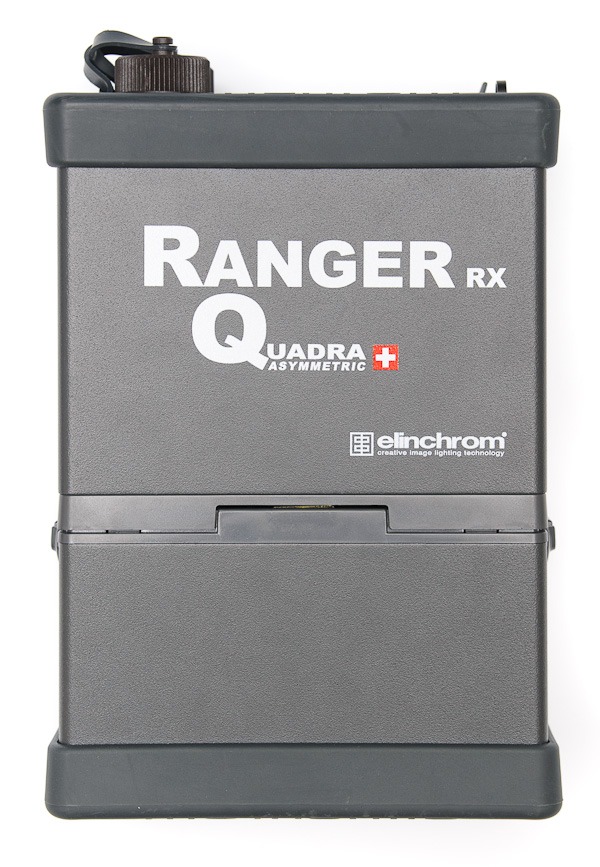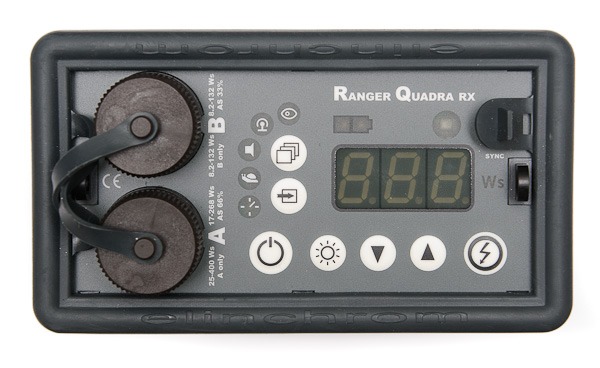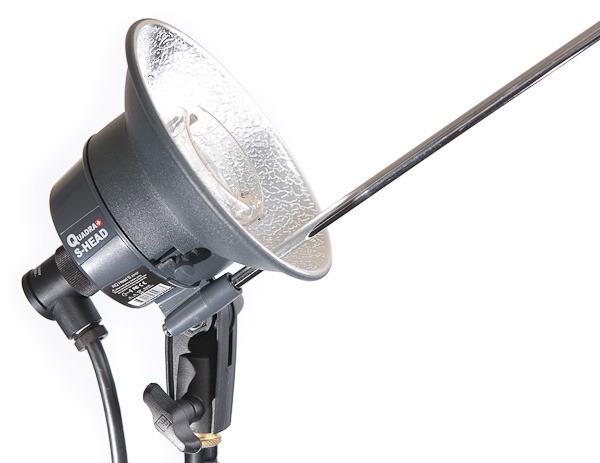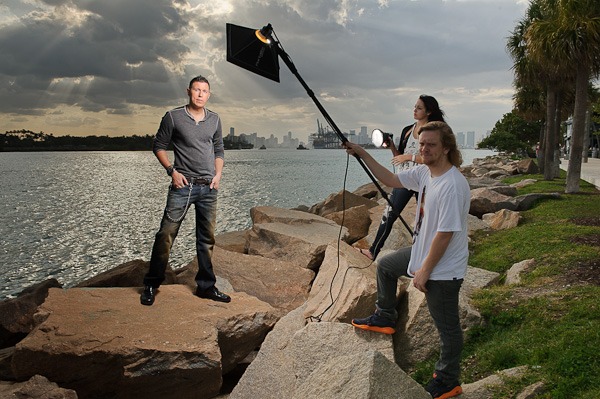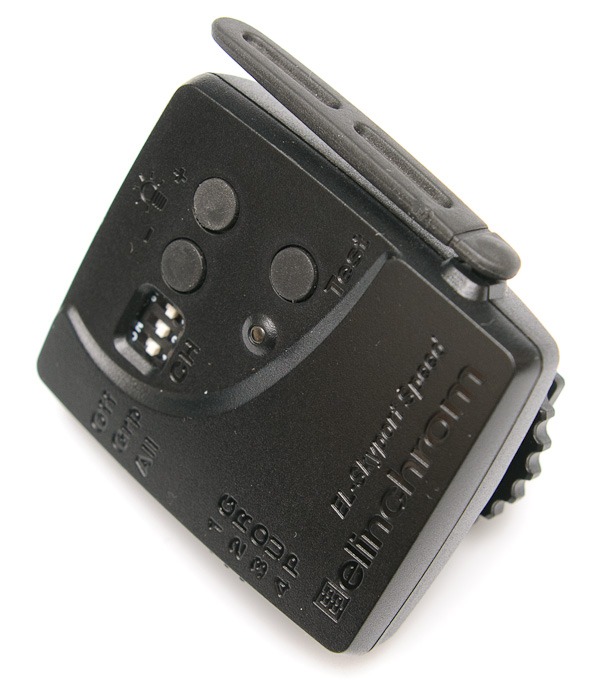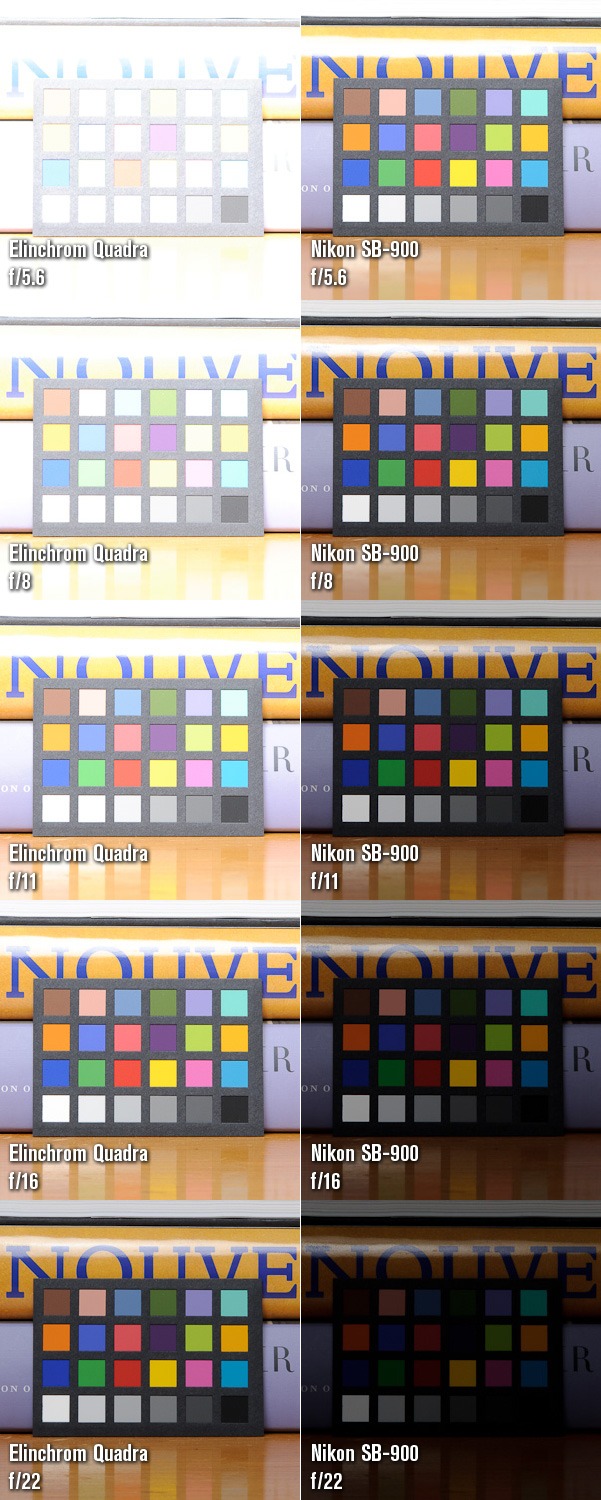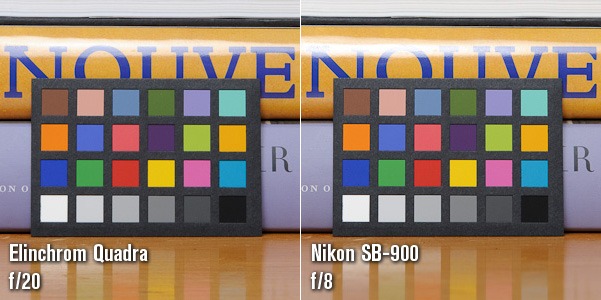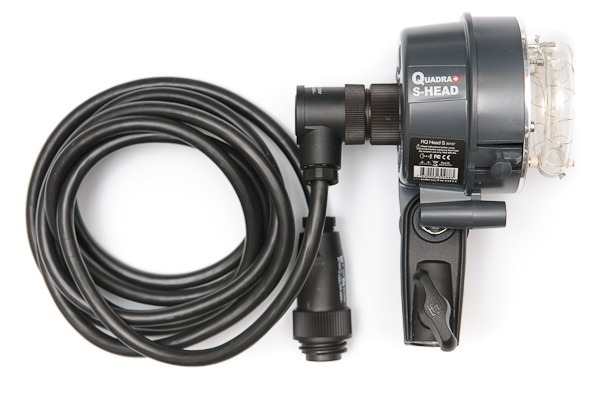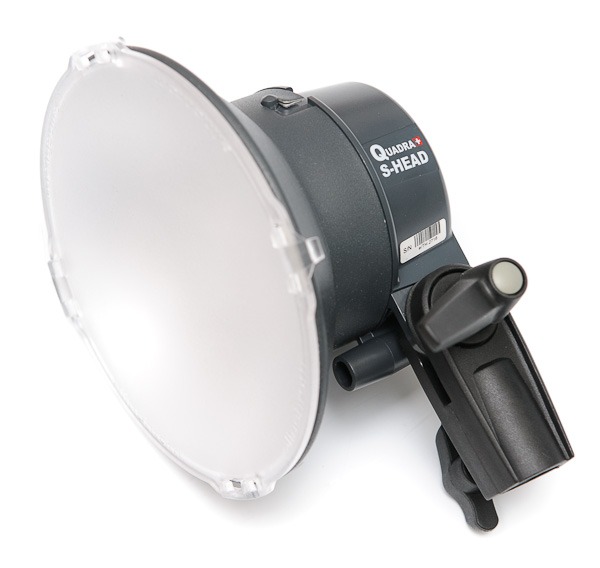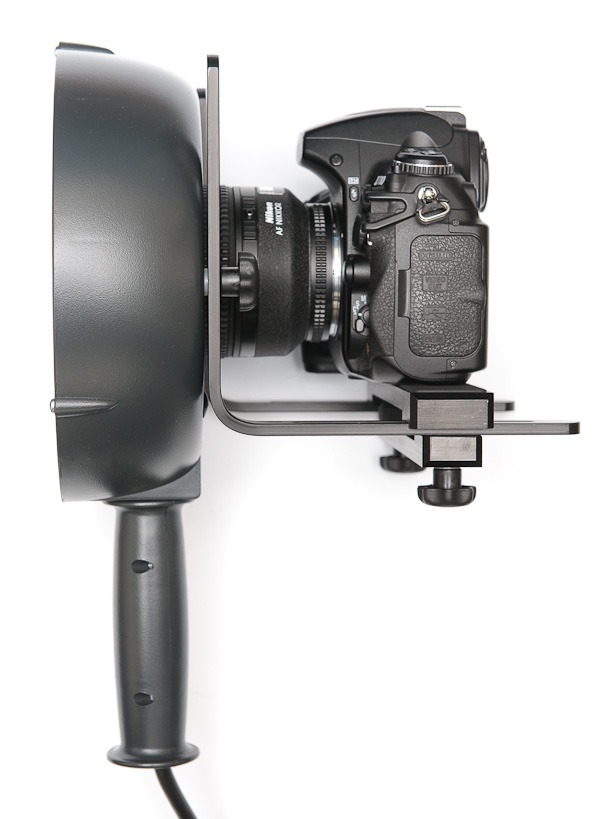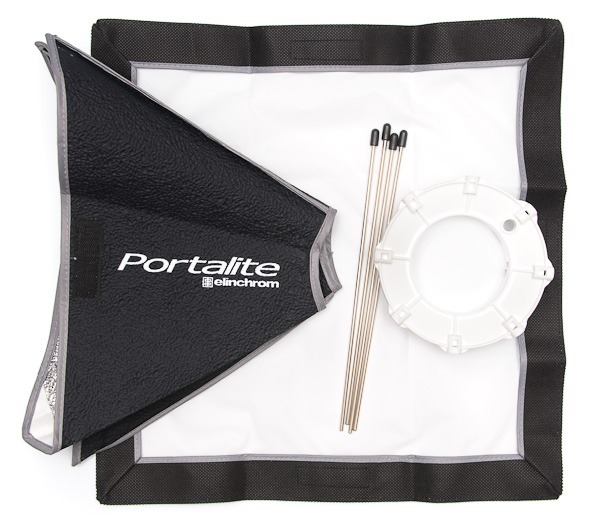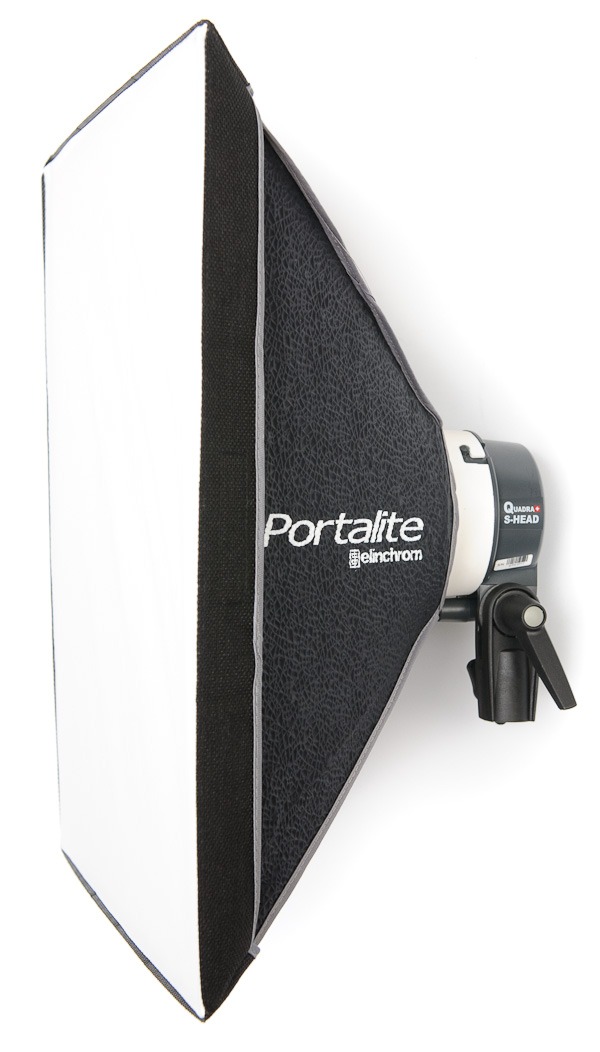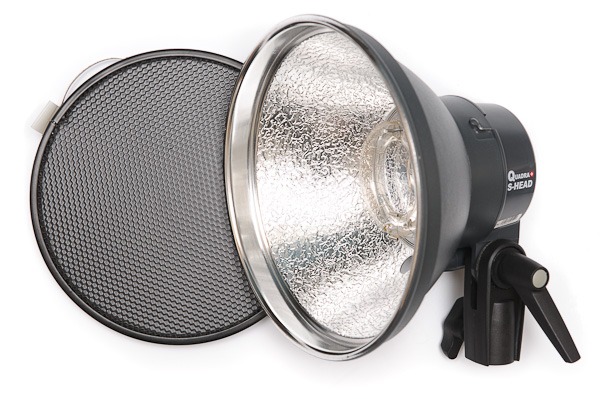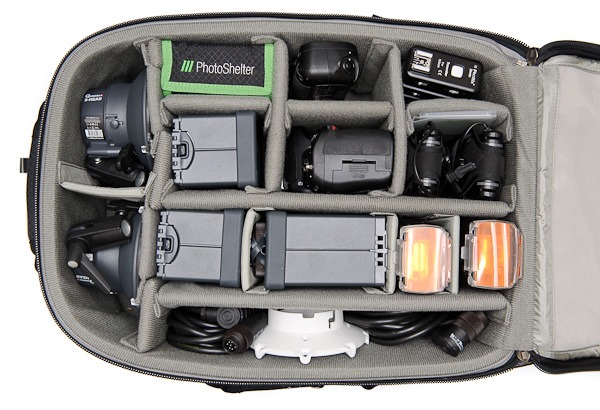For a portable location lighting solution, speedlights have long been a staple due to their small size. However, speedlights often leave photographers wanting in power, especially when shooting in bright sunlight. The solution of battery-powered strobes have traditionally been much larger and tremendously more heavy than speedlights.
Enter the Elinchrom Quadra Ranger series.
The Quadra system is one of the first ventures by a major lighting manufacturer that starts to bring real power in a groundbreaking small package. With flash heads smaller than Nikon SB-900 and a power pack light enough to carry with a shoulder strap, the Quadras are a kit that are the perfect fit for frequent flyers and any photographer who want to keep their location kit as light as powerful without sacrificing sun-combating power.
Heir To The Thrown
The Elinchrom Quadra Ranger RX are the baby brothers to the Elinchrom Ranger RX series, and essentially take a similar form factor, but at about 1/3 the weight, half the size, and overall much more portable.
Design
The design of the Quadra Rangers is easily the most compelling feature of this kit. Simply, everything is incredibly compact. This is a truly go-anywhere lighting setup. One of the features that helps accomplish this, aside from the small sizes of all the components themselves, is the fact that pretty much everything is modular. The cables detach from the flash heads, the power back separates into the electronic brains and the battery, etc.
The flash heads feature built-in umbrella holders and a stand attachment/tilt mechanism. The cables for the kit are fully detachable, which goes a long way in minimizing bulk when packing and transporting the Quadra kit. Each end of the cable has a locking threaded collar for secure use.
The battery pack features two ports for an asymmetric power distribution when two flash heads are used. In this two-light setup, 2/3 power goes to the A socket and 1/3 power goes to the B socket.
The controls on the power pack are straight forward, with a digital display and soft-touch buttons for the interface. The power of the unit is controllable in 1/10-stop, 1/2-stop, or full-stop increments, which is great for fine-tuned exposure.
Size & Weight
The entire Elinchrom Quadra Ranger kit is downright tiny – as it should be, for this basically its entire raison d'être. The flash heads themselves are essentially almost half the size of a speedlight like the Nikon SB-900. The battery pack is a little larger than the size of a really thick hardcover book.
Even with the sealed lead acid batteries, the kit is light enough to throw into a backpack or carry using the supplied shoulder strap.
Build Quality
There's always a catch. With the Elinchrom Quadra Rangers, the catch is in the build quality of the flash heads. Without pulling any punches, the heads are pretty much all plastic, from the mount to the tilt head and all the body components. What all this adds up to is that the heads feel a bit cheap.
The flash heads feature an umbrella mount that is just a tube for an umbrella shaft. There's no lock on the mount – the shaft is held in place by tension alone. In testing, this tension was enough to securely hold a Photek Softliter II without issue, though you do have to crank down the tension well.
The bigger concern with the flash heads is the ability of the heads' tilt mechanism to lock with the weight of very large modifiers. To this end, Elinchrom offers the RQ-EL Reflector Adapter, which accepts the standard Elinchrom mount and features a stronger dedicated stand mount and tilt mechanism.
The build quality of the rest of the kit is great – the battery pack locks securely and feels solid once assembled.
Ease of Use On Location
Overall, I found the Quadras incredibly easy to use. Even without reading any of the manuals, the entire system has an easy, plug ‘n play simplicity, from assembling the kit to shooting with the Elinchrom Skyport to control power levels. A big part of the ease of use is the simplicity of the system, but the size and weight of the Quadras can't be stressed enough – the compact portability and light weight of these units alone makes for a much easier location kit.
Aside from quibbles about the Quadra accessories mount on the flash head, the system as a whole functions just beautifully in the field. ‘Nuff said.
Oh, but one caveat – below.
Asymmetrical Power
The one catch I have about using the Quadras in the field is that when using two flash heads on one battery pack, the power, as advertised, is asymmetrical. 2/3 goes to the A head and 1/3 power goes to the B head, automatically and statically ratioed based on whatever the global power setting is.
While this works for most quick ‘n dirty location shooting, the lack of fine-tuning between the two sockets's power distribution is ultimately a handicap for the system. I'd love the ability to split power between the two power channels – even the ability to switch the ratio to 50/50 power between the two would be a great option to have.
Elinchrom Skyport System
Like a lot of companies, Elinchrom has developed their own wireless flash triggering system – the Elinchrom Skyport series. The Quadra Ranger power pack has a built-in Skyport receiver – naturally, the Quadras and Skyport transmitter work perfectly together.
The clear benefit to the digital controls comes in with the use of the included Elinchrom wireless trigger transmitter. While the Skyport transmitter feels like a cheap plastic toy on a good day, the ability to dial the power pack's levels up or down in precise, 1/10-stop increments is beautiful. If that sounds too slow, 1/2-stop and full-stop adjustments are also possible.
In terms of the interface, I do wish that the Skyport transmitter had the ability to display the current power level of the power pack.
While the built quality of the Skyport transmitter leaves lot to be desired, particularly the flimsy exterior antenna, the sheer ease of use in remotely controlling the power of your remote lights trumps any negatives.
Quality of Light
Long story short, the quality of the light that the tiny little Quadras put out looks great. No color tints that you can find on some lower-end strobes – just clean, consistent white light from the Quadras heads.
Quadra Power
Now here's the big question – a system, no matter how convenient, still has to have the power to be useful. After all, speedlights still win out for sheer portability, but their relative lack of power is the reason small, portable systems like the Elinchrom Quadras exist.
So, do the Quadras cut the mustard?
My test for this was to shoot late afternoon in South Beach Miami with the sun in the frame. Limited by the 1/250 sync speed of the Nikon D3 and the base ISO 200, I shot at f/11 and used the Singh-Ray Vari-ND filter and dialed in 6-stops of beautiful neutral-density.
The Quadras were more than up to the task. Quite simply, they spanked the blazing sun into submission, even with 6-stops of ND over the 24-70mm f/2.8 I was using.
Quadras VS Speedlights
Alright, first-hand accounts of use in the field will probably satisfy most readers out there, but I know some of you are still hungry for more meat. To this end, I did a little real world test to show how these the Elinchrom Quadras stack up against a small, battery powered flash like the Nikon SB-900 speedlight.
The Test Setup:
While I'd seen other tests comparing the Elinchrom Quadras to small speedlights, all of these tests were shot with bare flash and only metering the center. This kind of testing reveals that the difference between the lights is roughly only 1.5-stops. After shooting with the Quadras, I knew the difference was much greater.
The key piece missing with these other tests is that they don't replicate actual use, since a light modifier is almost always used.
To test the real-world use of these lights, I decided to go with a Photek Softliter II as the test modifier – a nice, relatively big light modifier that should show off the differences between the Quadras and Nikon SB-900. The Softliter was was positioned with its center at a height of 72-inches, and with the center 66-inches from the test scene. For both tests, each light was fired at full power at different aperture levels.
The Elinchrom Quadra was shot bare with no reflector or diffuser. The Nikon SB-900 was set at 24mm with no diffuser.
The Results:
Power Equivalency:
Studying the above examples, one can see that the difference between the Elinchrom Quadra and the SB-900's power doesn't break down into full stops. To this end, and to get as close as possible, I shot at 1/3-stop intervals to get as close as possible to see at what aperture the two lights reached equivalency.
2 and 2/3-stops. That's the difference between the Quadras and the SB-900. More specifically, the Elinchrom Quadras give you 2 and 2/3-stops more power than a Nikon SB-900 when using a modifier like the Photek Softliter II.
Quadra Flash Heads
The Quadra Ranger system encompasses several different flash units:
S Head
The S head is the standard flash head for the Quadras. For the majority of users, this is the set you'll want to go with unless you're shooting action sequences or sports.
A Head
The A head is Elinchrom's “speed” head, which are optimized for very short duration flashes to freeze motion. When used with the lower power B socket on the Quadra power packs, the A heads can achieve flash duration as short as 1/6000 second. Aside from the difference in the flash components, the A heads look identical to the S heads.
RQ Ringflash PRO
The Elinchrom RQ Ringflash PRO is a dedicated ringflash for the Quadra series. Aside from the traditional bracket mount for a ringflash, this ringflash also features a handle on the bottom of the unit, which is handy for using the flash “freehand” without the bracket. The downside to the handle is that the package is slightly bulky to pack, since the 2-meter cable is non-removable.
Elinchrom's Ringflash ECO does away with this handle and adds a detachable cable design, with the loss of a little speed in the duration of the flashes.
Lighting Modifiers
Ranger Quadra Portalite 40 x 40 cm
This softbox is small but mighty. At 15″ square, this softbox is extremely compact, but a great choice for the edgier single-person portraits I shot with it.
Aside from the nice quality of light from this tiny softbox, the best thing about it is the design – it breaks down to nothing more than few fabric panels, small plastic speedring, and four short metal rods. In other words, it's the kind of modifier than you can fit into a bag that's already full.
Other benefits of the modifier are that it's light and manageable enough for an assistant to hold without fatigue, and that it's small enough that it doesn't catch any wind.
RQ Reflector Grid:
Another dedicated Quadra modifier, the 18cm reflector also accepts 12º, 20º, and 30º grids. The grids snap in with a piece of spring metal for a tight piece of kit. This reflector grid worked great for adding just a touch of highlight shooting with the B socket of the Quadra's pack.
Extending the Quadra System
While I used the Quadra system with one power pack, I think a more complete system would be two total power packs and 2-3 flash heads between them, simply for the best combination of flexibility and dedicated power.
In addition, at least one of the extended, 10-meter cords is a good option for the most flexibility, as the 2.5-meter cords do limit flash positioning, especially if you're using the units on tall lightstands or with a boom.
Who Should Buy the Quadra System
So, who should be interested in buying the Quadra kit? Anyone interested in a go-anywhere portable lighting kit.
Summary
If you're looking for the smallest pro lighting kit out there with minimal weight, the Elinchrom Quadras are a beautiful piece of kit. Even with some cheap points in the build quality, the overall package is just so fast, convenient, and flexible that this system has to demand a lot of consideration.


